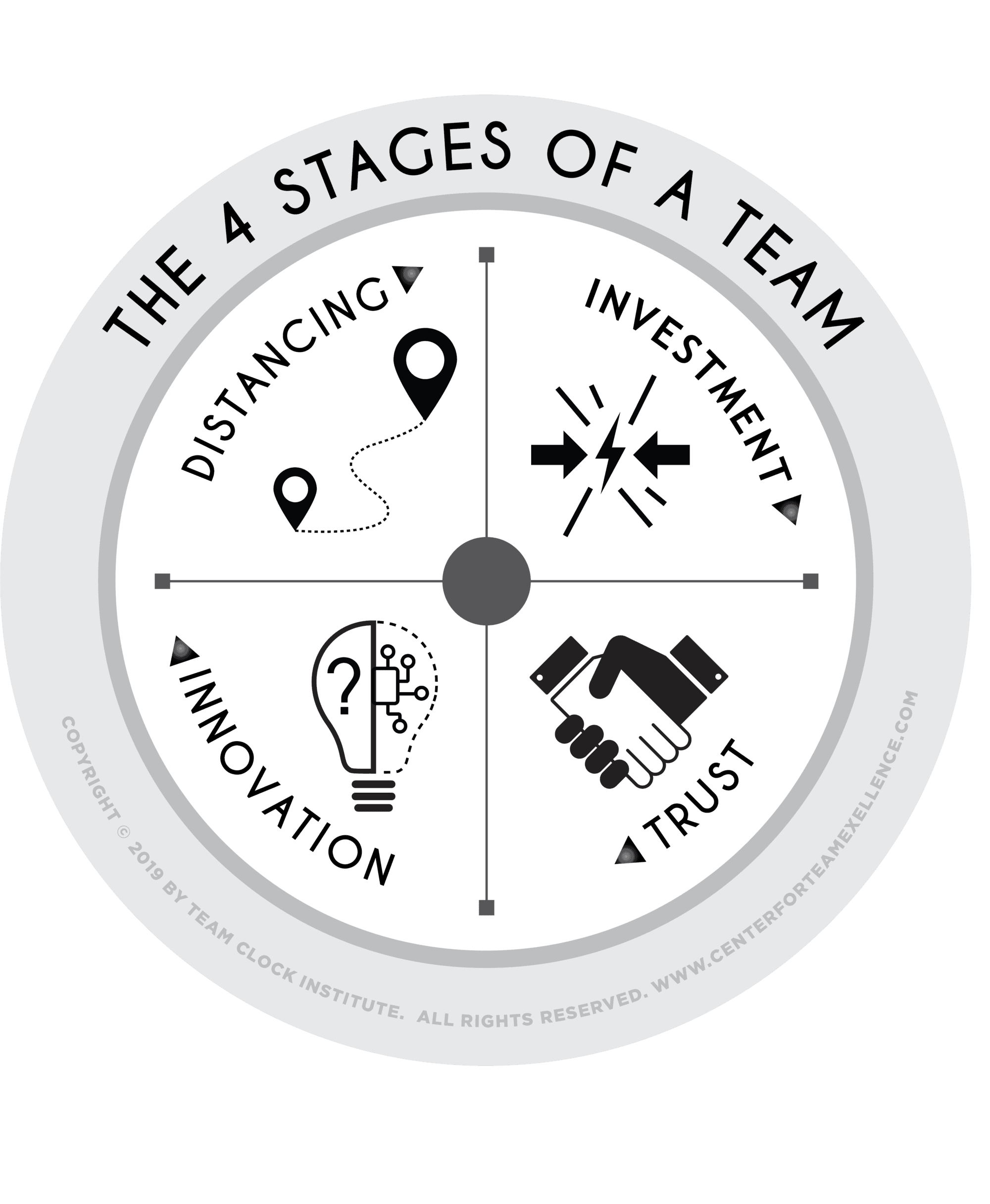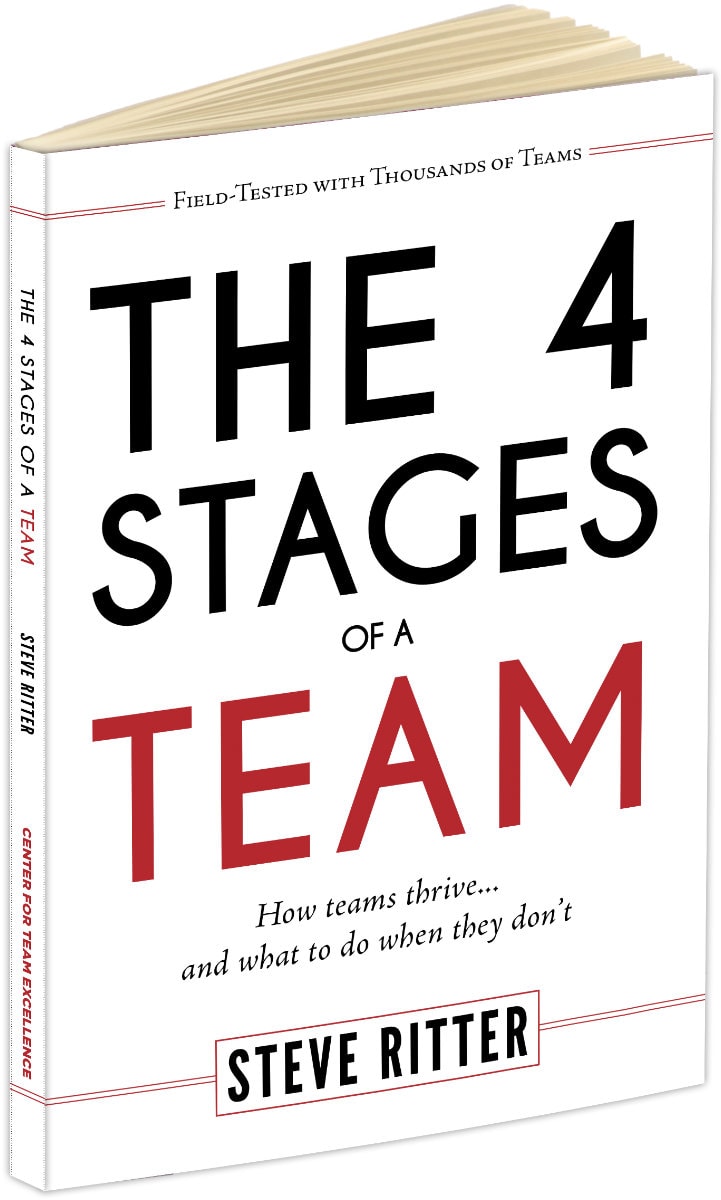Living things seek comfort. Science teaches the phenomenon of homeostasis – the tendency for a system to seek internal stability when adjusting to changing conditions. Music theory teaches the occurrence of cadence – the movement from tension to resolution. When teams are disrupted, the natural inclination is to find anchors – the people and process that will stay the same when things have been turned upside down.
Team transitions happen in predictable cycles so there’s always a path to stability and resolution. Once the team determines where they are in the cycle and why they are at that stage, the actions that anchor the group will become clear. Begin with simple diagnostic questions:
Investment: Are we reestablishing our norms, rules, roles, boundaries and goals following a period of disruption?
Trust: Are we navigating the consequences of a breakdown in respect, connection, accountability or psychological safety?
Innovation: Are we struggling with resistance to change, fear or the failure to harness the strengths of our diversity?
Distancing: Are we needing to step back, gain perspective, refuel, and reengage with our new circumstances?
These diagnostic question lead directly to solutions:

Investment: Discuss role clarity. Restate mission, values and vision. Embrace conflict with professionalism.
Trust: Hold yourself and each other accountable. Have crucial conversations. Celebrate connection.
Innovation: Leverage differences to empower smart risk taking. Explore, discover and create change.
Distancing: Mourn what has been lost. Refuel depleted energy. Refocus on the new opportunities the transition ignites.
Change becomes much more predictable when you evaluate the cycles of the team’s lifespan. Every team is always either moving through, stuck in, reacting to or preparing for one of the four stages. In what stage is your team? Why are you in this stage? What actions would move your team forward?
If you’d like to dig deeper, The 4 Stages of a Team… How team thrive and what to do when they don’t provides a toolkit for the life of the team.


